Living at the edge of a wide-open ocean vista or a secluded forest is a dream for many people who want to get away from it all. Whether it’s your lifetime home or just a seasonal getaway, here are some tips for living next to wild areas in a way that respects the site and creates a landscape that blends with its context.
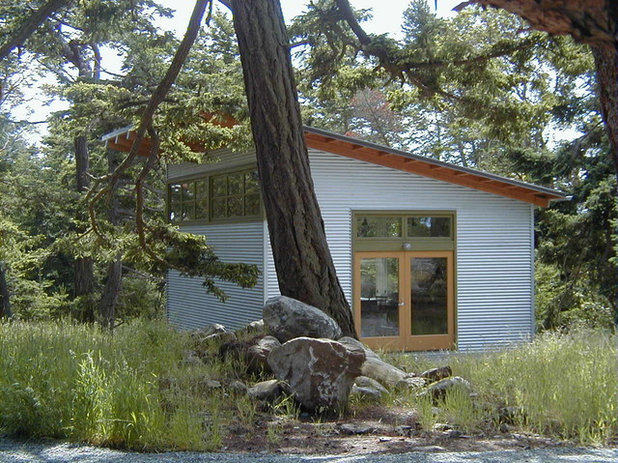
Mohler + Ghillino Architects
Think small. A home with a small footprint is a great way live to lightly on the landscape. Smaller homes are easier to visually blend with the surrounding wilderness because they are easier to fit in to their surroundings. Small homes can also afford a greater view of the landscape.
See more of this small artist’s cottage in the Pacific Northwest woods that feels at home in the landscape.
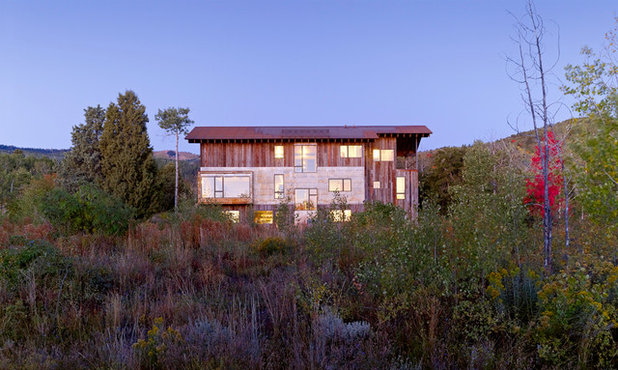
Carney Logan Burke Architects
Be wildlife friendly. If you are new to living on a wild edge, read up on local wildlife protection recommendations for your area through your county extension office or your state wildlife commission. Animals that are repeatedly exposed to things like rat poison, insecticides and pesticides can get severely ill or die.
Provide habitats and food sources for animals that you would like to attract to your garden. Birds and butterflies bring happiness to the landscape. Also check out wildlife structures, like those for mason bees, and site them away from the home so as to not disturb them.
Another way to be sensitive to local wildlife is by using lighting that does not disrupt the behavior of nocturnal animals.
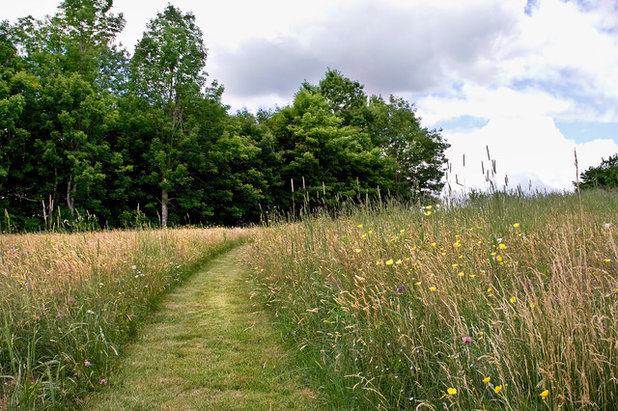
Matthew Cunningham Landscape Design LLC
Go chemical free. There are many ways to go chemical free with your landscape, starting with growing an organic lawn and using naturally rot-resistant wood.
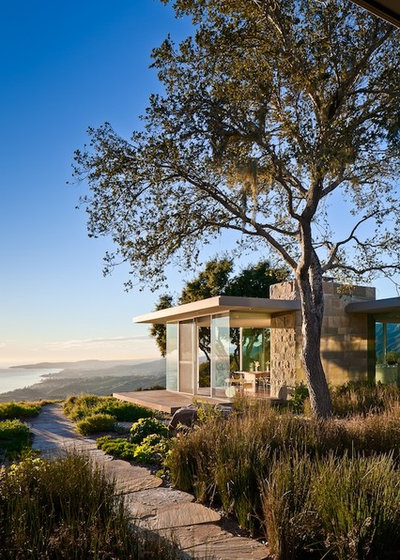
Neumann Mendro Andrulaitis Architects LLP
Cultivate a wild garden. Start your garden with native trees and shrubs that blend into the existing plant communities around your house. Let the edges of the garden, especially where they meet unmanaged vegetation, be less manicured. Long grasses, rambling shrubs and funky native flowers will blend well in the transitional wild garden.
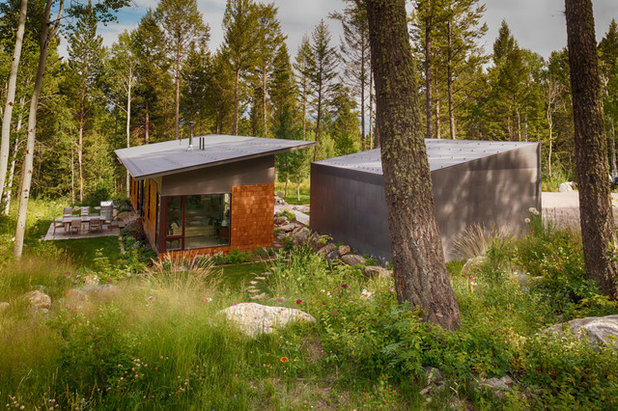
Carney Logan Burke Architects
Gardens that include a mix of natives and ornamental, noninvasive plants create a space that’s less rigid than a formal garden. In this example plants are mixed in with resident boulders to create a pineland-rock-garden style that’s easy to manage and blends well with the existing natural features.
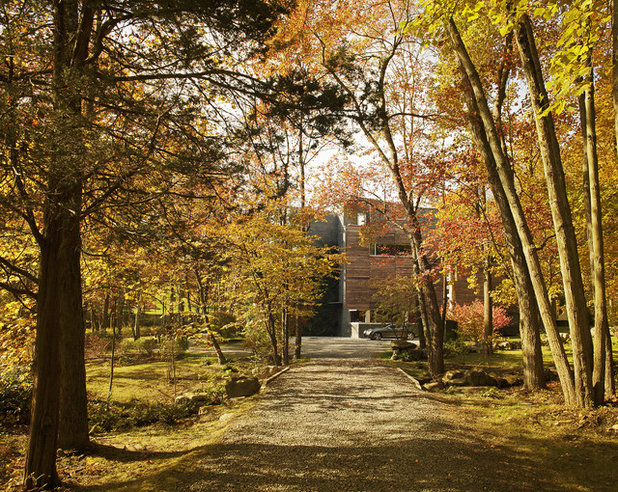
Murdock Solon Architects
Use local materials and colors. Local materials will give your home a rustic style that fits the natural environment. This is especially true for exterior colors and details. I believe every landscape has an intrinsic mix of colors based on the existing stone types and dominant vegetation, and that is influenced by atmospheric qualities like light and humidity. Together these existing elements create overall tones — a palette of colors — that you can take visual cues from when choosing exterior materials for your home, deck, outdoor furniture and garden plants.
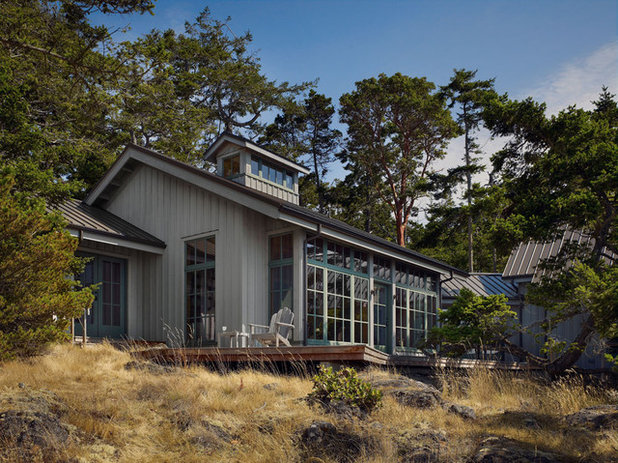 Observe the natural world.
Observe the natural world. Create a space where you can quietly observe the natural environment, preferably outdoors or on a screened porch so that you can listen to the native sounds of warblers, frogs or late-night owls. Make a habit of sitting and watching the unfolding drama of the landscape. Maybe get a bird book and binoculars or a guide to trees in your area and learn about the species that exist on your property.
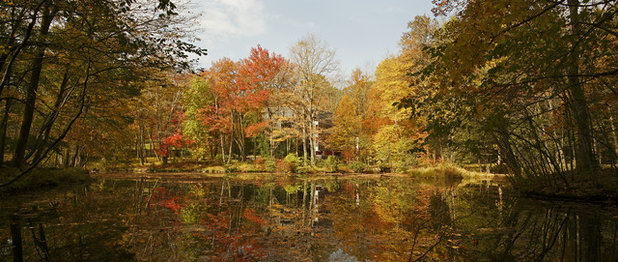
Murdock Solon Architects
Start taking notes in a journal about seasonal changes, what flowers are blooming and anything else that you notice happening in the world outside. The living environment will teach you many things and, over time, you will be well on your way to being a backyard naturalist.





